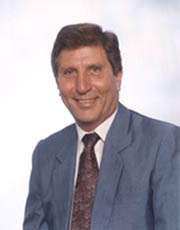MOBILE PHONE HISTORY :
mesasaging, email, packet switching for access to the Internet, and MMS for sending and receiving photos and video. Most current mobile phones connect to a cellular network of base stations (cell sites), which is in turn interconnected to the public switched telephone network (PSTN) (the exception are satellite phones).
MOBILE PHONE
A mobile telephone or cellular telephone (commonly, "mobile phone" or "cell phone") is a long-range, portable electronic device used for mobile communiction. In addition to the standard voice function of a telephone, current mobile phones can support many additional services such as SMS for text mesasaging, email, packet switching for access to the Internet, and MMS for sending and receiving photos and video. Most current mobile phones connect to a cellular network of base stations (cell sites), which is in turn interconnected to the public switched telephone network (PSTN) (the exception are satellite phones).
Inventor: Joel Engel and Richard Frenkiel
Criteria: First practical cellular telephone sy
Birth: Richard Frenkiel, March 4, 1943 in Brooklyn,
New YorkJoe Engel, February 4, 1936 in New York City
Nationality: American
MOBILE PHONE HISTORY
In 1934 the United States Congress created the Federal Communications Commission. In addition to regulating landline interstate telephone business, they also began managing the radio spectrum. It decided who would get what frequencies. It gave priority to emergency services, government agencies, utility companies, and services it thought helped the most people. Radio users like a taxi service or a tow truck dispatch company required little spectrum to conduct their business. Radio telephone used large frequency allocations to serve a few people. The FCC designated no radio-telephone channels until after World War II.
MOBILE PHONE HISTORY
In 1934 the United States Congress created the Federal Communications Commission. In addition to regulating landline interstate telephone business, they also began managing the radio spectrum. It decided who would get what frequencies. It gave priority to emergency services, government agencies, utility companies, and services it thought helped the most people. Radio users like a taxi service or a tow truck dispatch company required little spectrum to conduct their business. Radio telephone used large frequency allocations to serve a few people. The FCC designated no radio-telephone channels until after World War II.
On June 17, 1946 in Saint Louis, Missouri, AT&T and Southwestern Bell introduced the first American commercial mobile radio-telephone service. Mobiles used newly issued vehicle radio-telephone licenses granted to Southwestern Bell by the FCC. They operated on six channels in the 150 MHz band with a 60 kHz channel spacing. [Peterson] Bad cross channel interference, something like cross talk in a landline phone, soon forced Bell to use only three channels. In a rare exception to Bell System practice, subscribers could buy their own radio sets and not AT&T's equipment. Installed high above Southwestern Bell's headquarters at 1010 Pine Street, a centrally located antenna transmitting 250 watts paged mobiles and provided radio-telephone traffic on the downlink. Operation was straightforward, as the following describes:

























